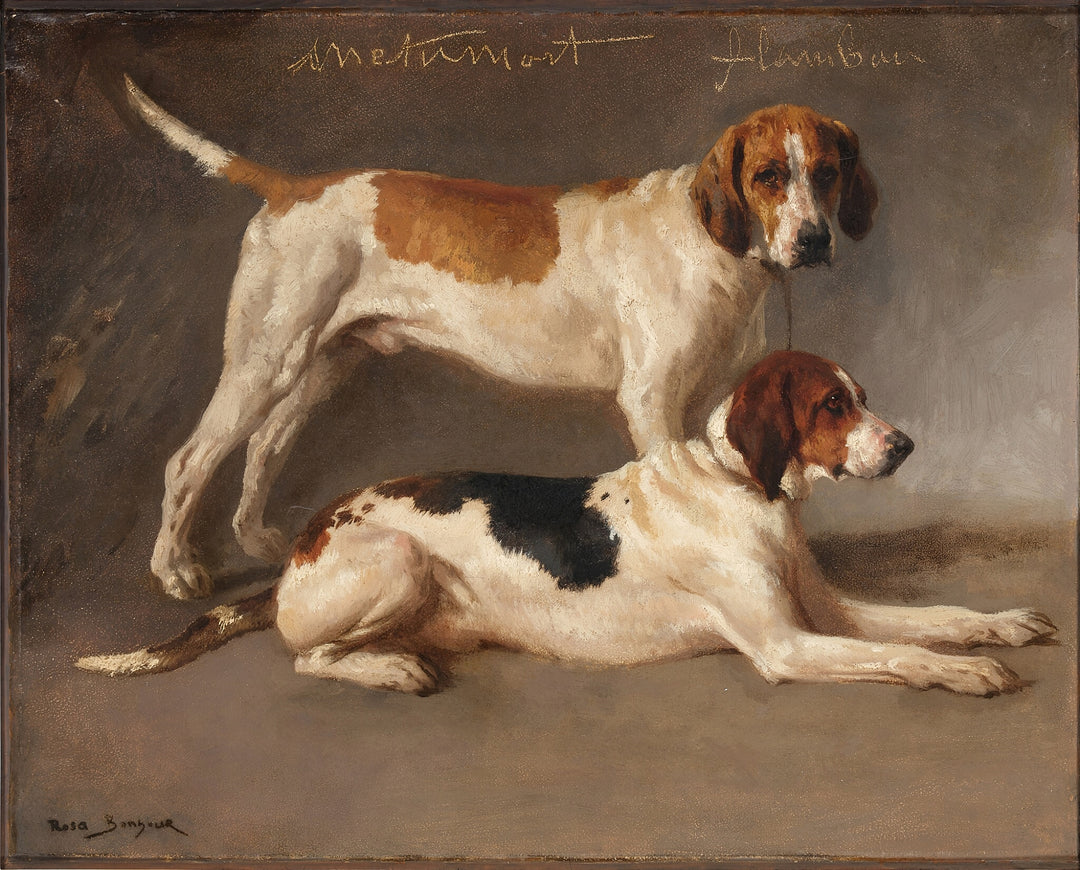
Metamort and Flambeau - Rosa Bonheur
| Author: | Rosa Bonheur |
|---|---|
| Title: | Metamort and Flambeau |
| Original location: | Private Collection |
| Year: | 1860–1890 |
In Metamort and Flambeau (probably painted sometime between 1860 and 1880), Rosa Bonheur immortalizes two hunting dogs in a composition that, at first glance, seems simple, but reveals a deep anatomical and expressive knowledge of the animals. The work presents the two hounds in different poses: one standing, with a firm and attentive demeanor, and the other lying down, its head raised in a calm yet expectant attitude. This arrangement creates a visual balance in which verticality and horizontality complement each other, achieving a harmony that highlights the dogs’ natural elegance.
Bonheur, true to Realism, avoids any idealization and portrays Metamort and Flambeau (two English pointers) with scientific rigor, respecting the texture of their coats and the structure of their musculature. The subtle lighting that casts soft shadows on the ground reinforces the bodies’ three-dimensionality, while the neutral background keeps the focus on the protagonists without unnecessary distractions. The artist adopts a sober and objective approach in this canvas, influenced by her meticulous observation of the natural world.
Pictorial realism, of which Bonheur was one of the leading figures in animal painting, emerged as a response to academic art and its ideals of artificial beauty. In this painting, one can see how the artist distances herself from the traditional symbolism of dogs in Western painting, where they often represented loyalty or nobility. Instead, she presents them as what they truly are: functional animals, with a dignified presence, but without allegorical embellishments.
Through this work and others such as "Study of Two Dogs", "A Limier Briquet Hound" or the famous "Barbaro After the Hunt", Bonheur offers a fresh perspective on the natural depiction of wildlife, influencing later artists who also explored the relationship between humans and their animal companions.